Last Updated on January 12, 2024 by Kittredge Cherry
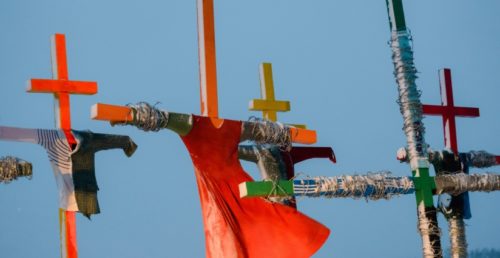
Crosses draped in LGBTQ clothing and prayer beads made with a gay man’s blood call attention to queer experience with the church in the work of gay Polish artist Daniel Rycharski.
He grabbed international headlines with his first solo exhibit at the Museum of Modern Art in Warsaw in spring 2019. The New York Times praised him for “the confidence to explore his gay identity in art, with crusading works that put the church’s rejection of gay Catholics in the spotlight.” His next exhibit opens Nov. 14, 2019 in Nice, France.
Rycharski was also interviewed by the PBS News Hour about how the Catholic church “incited hatred against LGBTQ people.”
His best known work is the critically acclaimed sculpture “Fears.” The crosses in this sculpture draw a parallel between the suffering of LGBTQ people and the crucifixion of Jesus during the Roman occupation. The Romans used crucifixions to scare and dominate people, much as farmers use scarecrows to protect their crops — and as the church uses its power to terrorize LGBTQ people into self-hatred and submission.
Rycharski gathered colorful clothing from LGBTQ people who had experienced discrimination in their daily lives. Then he cut and sewed the clothes onto crosses, sometimes wrapping them with barbed wire to evoke the torture of crucifixion. The eye-catching crosses of “Fears” were first exhibited in the fields around Rycharski’s rural hometown of Kurówek, where they also functioned as actual scarecrows to frighten away birds. They also call to mind the notorious gay-bashing murder of Wyoming student Matthew Shepard, whose battered body was initially mistaken for a scarecrow when he was discovered tied to a fence.
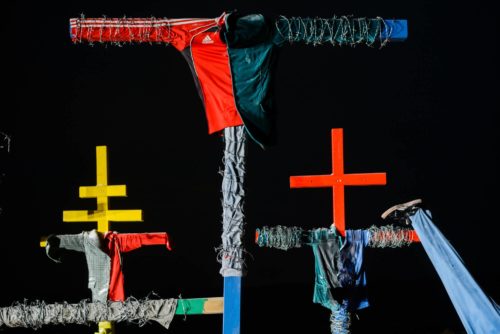
“Fears” by Daniel Rycharski
In another work, Rycharski added an unusual ingredient to the resin for making rosary beads: the blood of a gay Catholic friend. “The blood was mixed with the resin,” Rycharski told Q Spirit. The resulting rosary is deeply spiritual, critiquing the church’s oppression of LGBTQ people while calling for Catholic courage.
Rycharski has created many other artworks with LGBTQ Christian themes, including a rainbow banner with Saint Expeditus and a metal plaque with a quote from the catechism urging respect for people with homosexual tendencies. No Polish church would display the plaque, so he stood in front of one holding it for hours in Warsaw’s Old Town.)
These and other examples of Rycharski’s art are covered extensively on the Warsaw Museum of Modern Art website in both English and Polish.
“The pieces brought together for the purposes of the exhibition tell the story of an artist who has shifted from a desire to organise a grass-roots revolution and achieve equal rights for LGBT+ individuals within the Church to the determination to practice his faith according to his own rules,” the museum site says.
Born in 1986, Rycharski studied at the Krakow Academy of Fine Arts. He became the youngest recipient of the prestigious Kulturysta Roku award at age 26.
Rycharski’s art emerges during a period when Polish politicians are intensifying the conflicts between religious conservatives and LGBTQ people. For example, Polish LGBTQ activist Elżbieta Podleśna was arrested in 2019 for “offending religious sentiments” on charges that she put up posters of the Virgin Mary and Christ child with a rainbow halos.
Rycharski’s upcoming exhibit will run from Nov. 14, 2019 to Jan. 12, 2020 at Villa Arson in Nice, France. It is named “La goutte creuse la pierre” (“Drops of water wear away the stone.”) It will feature a sculpture with drops of holy water falling onto a stone carving of Rycharski’s head, gradually destroying it.
___
Top image credit: “Fears” by Daniel Rycharski
___
Copyright © Kittredge Cherry. All rights reserved.
Qspirit.net presents the Jesus in Love Blog on LGBTQ spirituality.

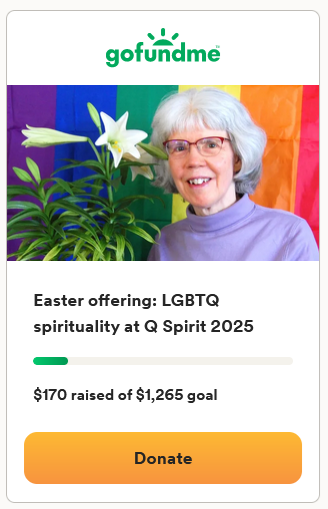















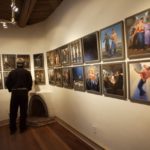

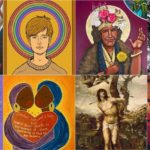

Congratulations to Daniel for his courage. I have recently been in both Poland and Georgia(the country) where there is an unholy alliance between right wing politicians and the church hierarchy designed to intimidate and exclude queer people. There is a syndrome where Churches become symbols of freedom against the Soviet occupying force then use that freedom when achieved to persecute queer people. I am responding to this as an artist too holding an exhibition Under the Dome of Heaven as part of Melbourne’s Midsumma festival in January http://eurekamichael.blogspot.com/